
Science
17:53, 04-Oct-2017
Three scientists awarded Nobel Prize in Chemistry 2017 for visualizing biomolecules
By Li Qian and Gong Zhe
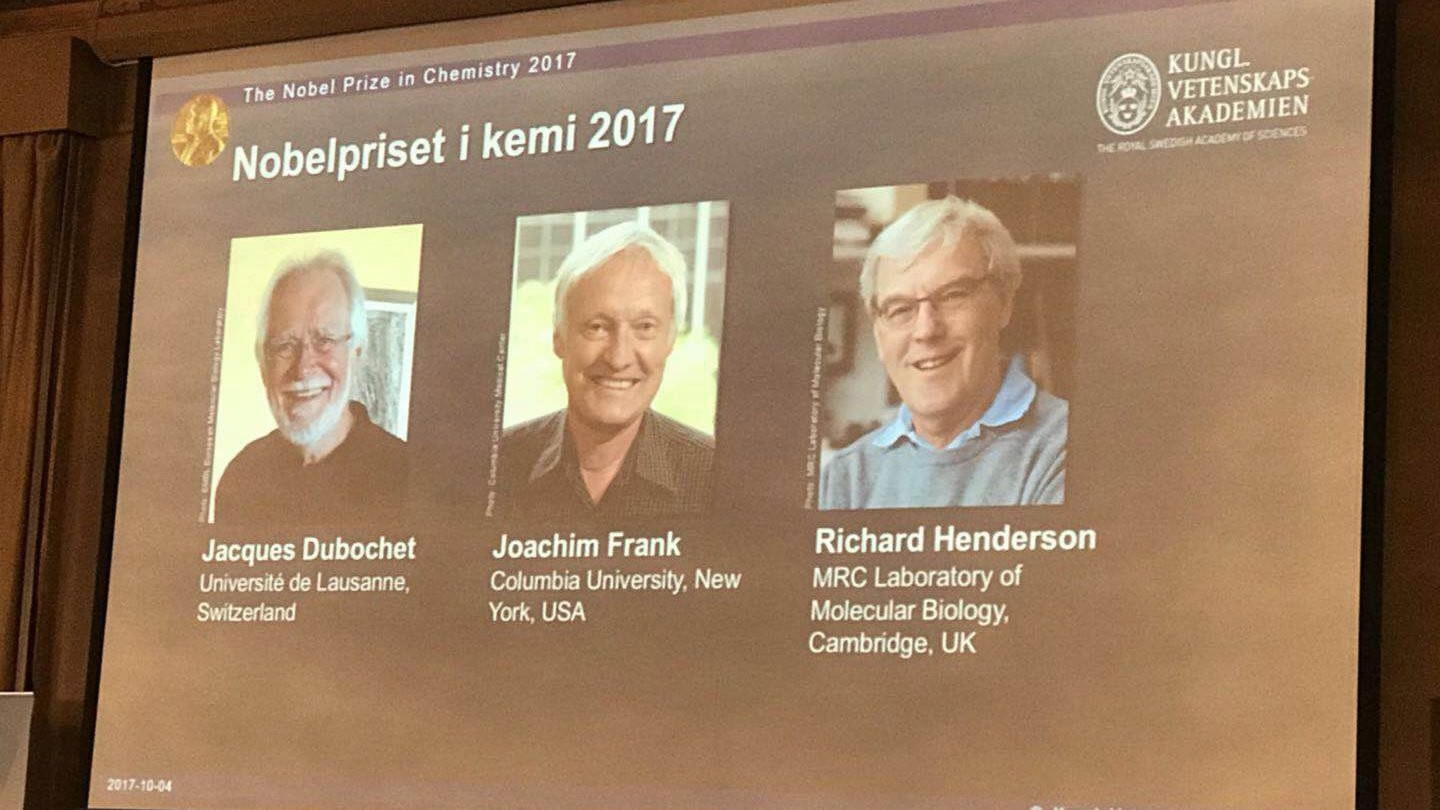
The 2017 Nobel Prize in Chemistry has been awarded to Jacques Dubochet, Joachim Frank and Richard Henderson for “developing cryo-electron microscopy for the high-resolution structure determination of biomolecules in solution,” announced the Royal Swedish Academy of Sciences on Wednesday.
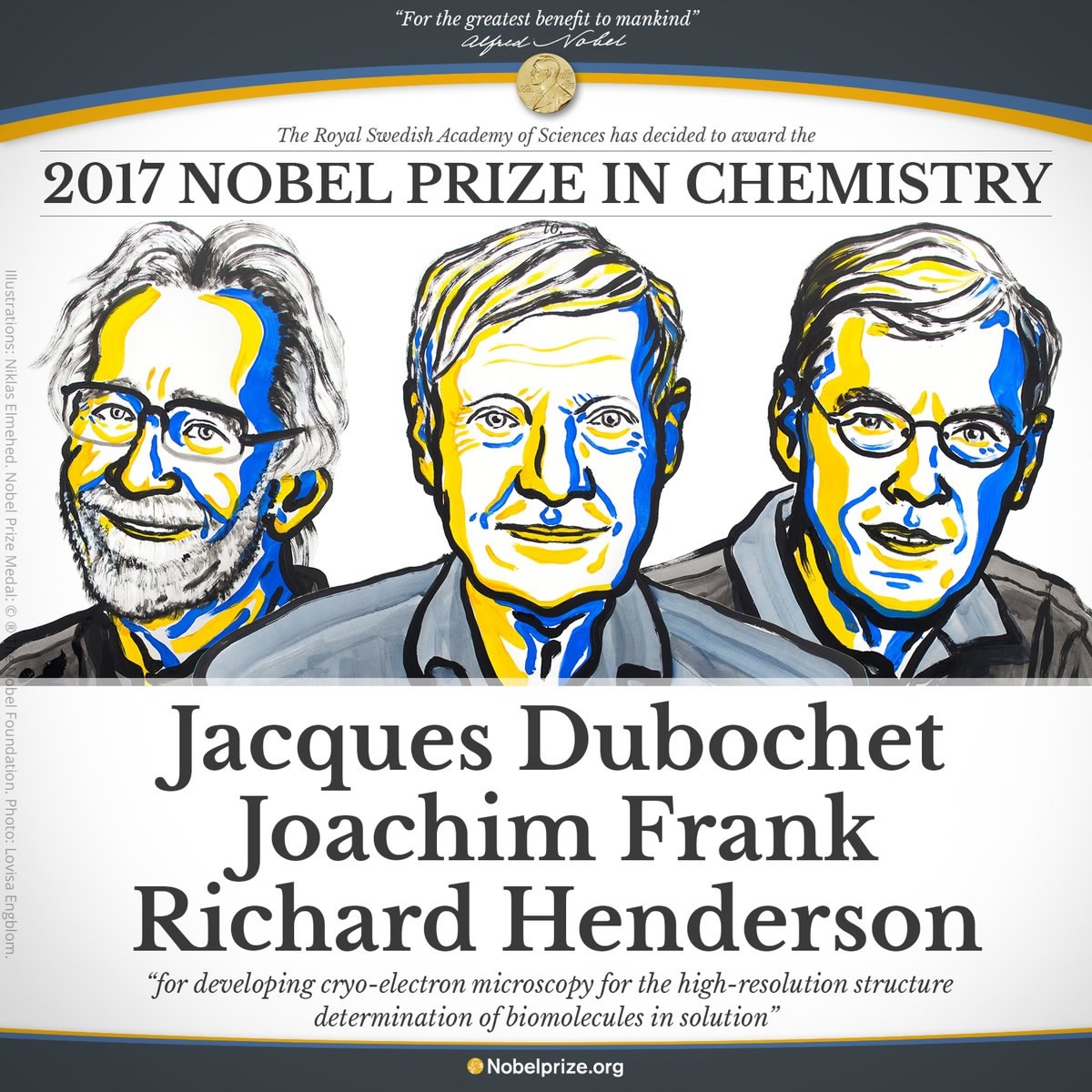
Picture by nobelprize.org
Picture by nobelprize.org
Life, in extreme details
"Scientific breakthroughs often build upon the successful visualization of objects invisible to the human eye," explained the the academy in a press release.
This can be applied to biological research. Biomolecule is a type of basic structural unit of life. But it's too small and fragile to be observed closely in the old times.
"Electron microscopes were long believed to only be suitable for imaging dead matter, because the powerful electron beam destroys biological material," explained the the academy in a press release. "Cryo-electron microscopy changes all of this."
That's why the academy think the three biologists should be awarded Nobel Prize.
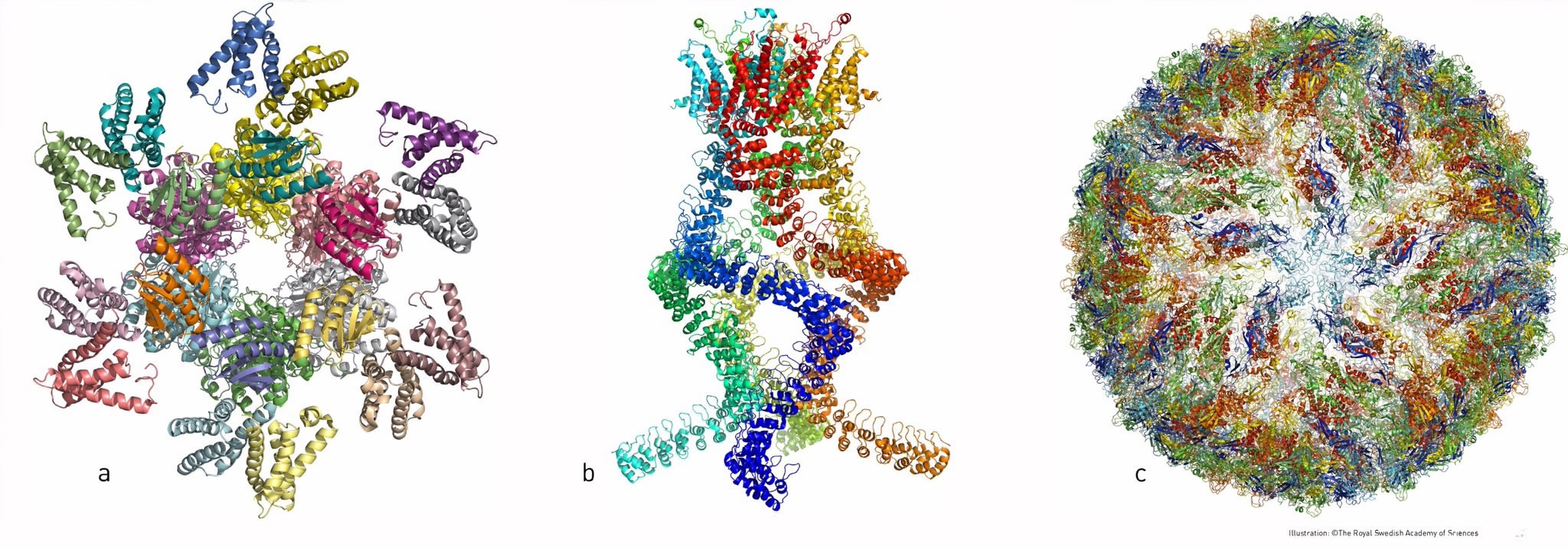
Atomic structures of a) protein complex that governs circadian rhythm b) pressure sensor of the type that allows us to hear c) Zika virus /Picture by nobelprize.org
Atomic structures of a) protein complex that governs circadian rhythm b) pressure sensor of the type that allows us to hear c) Zika virus /Picture by nobelprize.org
Another trio
The number of laureates for the chemistry prize is three, the same as it for medicine and physics.
But the countries of residence of the scientists are diversified this time, unlike the previous two trios.
Jacques Dubochet works at the University of Lausanne in Switzerland; Joachim Frank did his research at the Columbia University in the US and Richard is a biologist at Cambridge, UK.
Henderson proved that the technique can be achieved in 1990. The other two laureates made it real in each of their own ways.
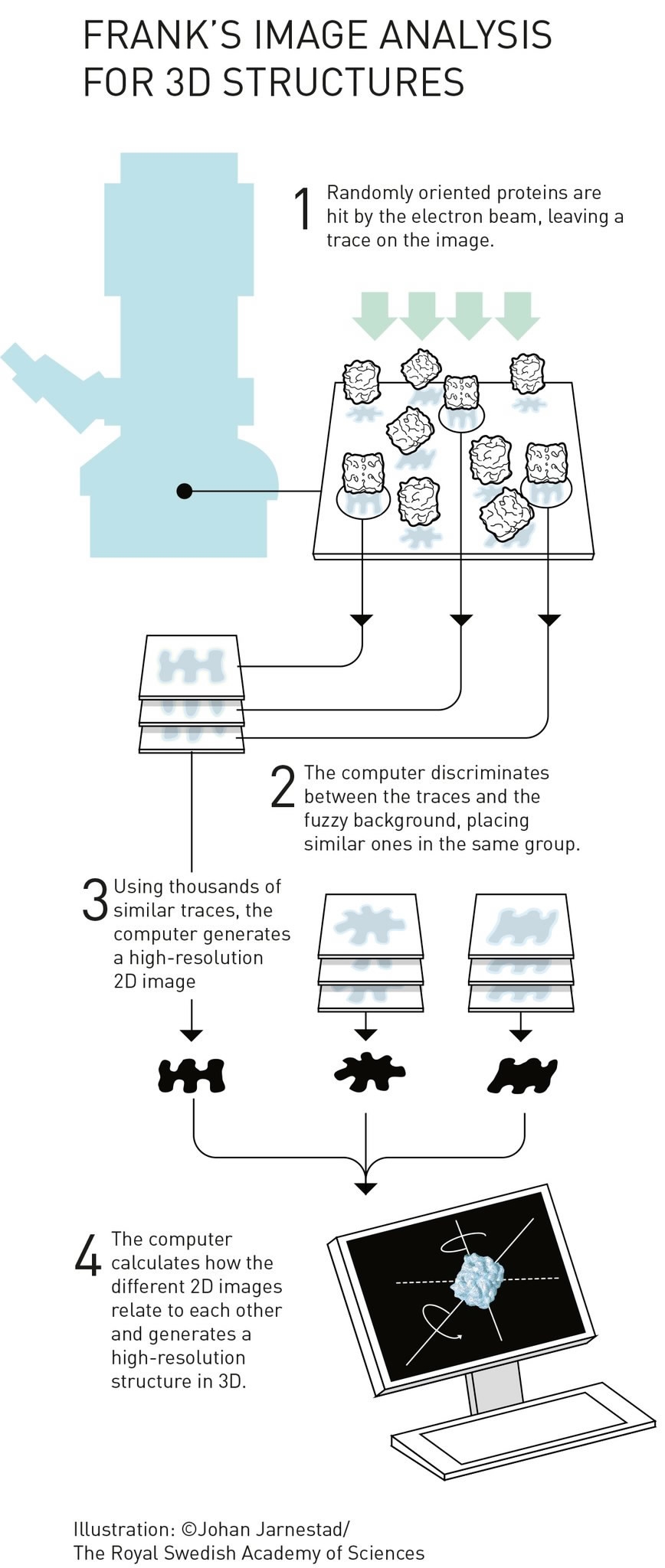
Joachim Frank's way of imaging biomolecules in 3D /Picture by nobelprize.org
Joachim Frank's way of imaging biomolecules in 3D /Picture by nobelprize.org
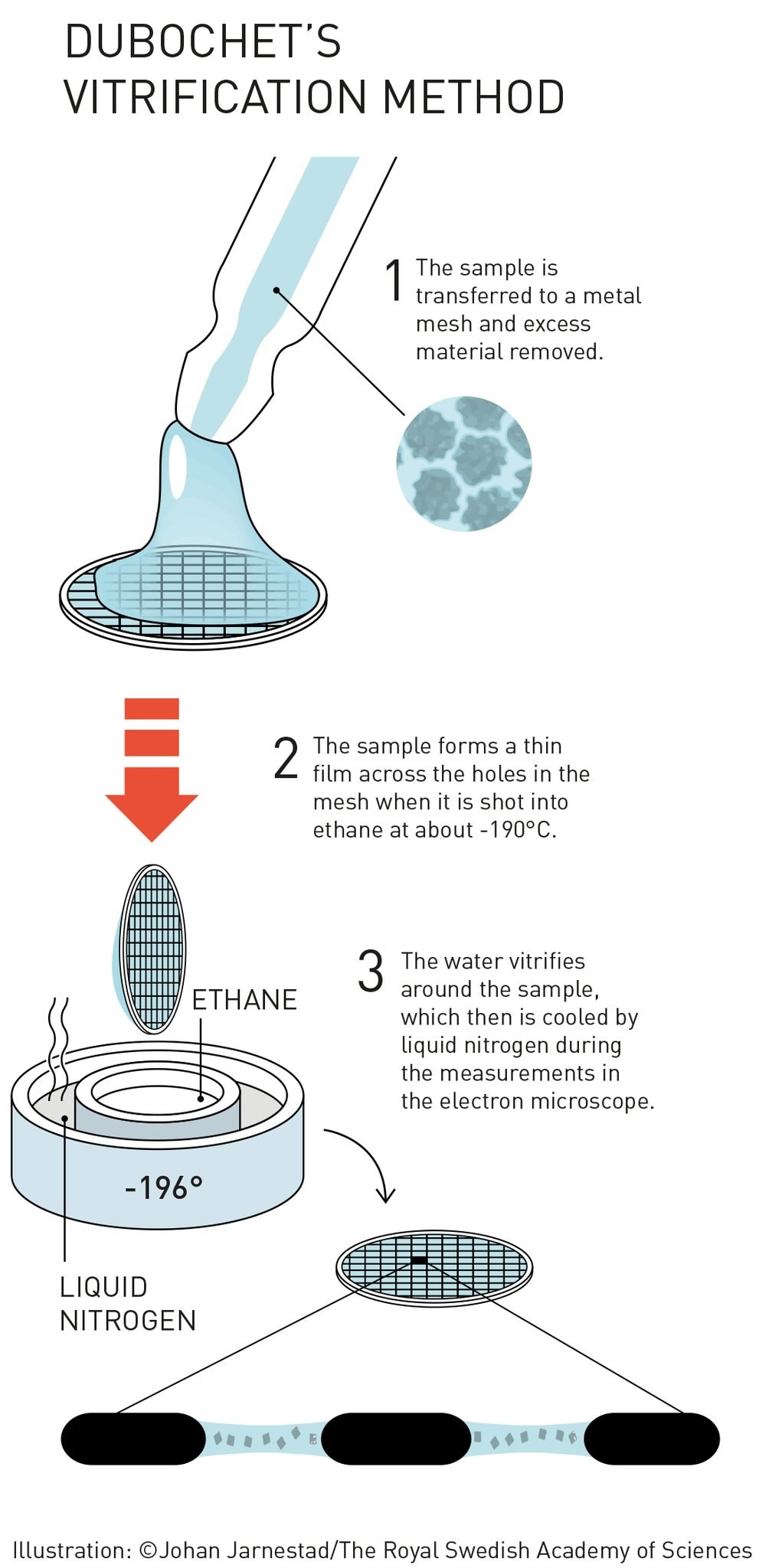
Jacques Dubochet's way of imaging biomolecules in 3D /Picture by nobelprize.org
Jacques Dubochet's way of imaging biomolecules in 3D /Picture by nobelprize.org

SITEMAP
Copyright © 2018 CGTN. Beijing ICP prepared NO.16065310-3
Copyright © 2018 CGTN. Beijing ICP prepared NO.16065310-3